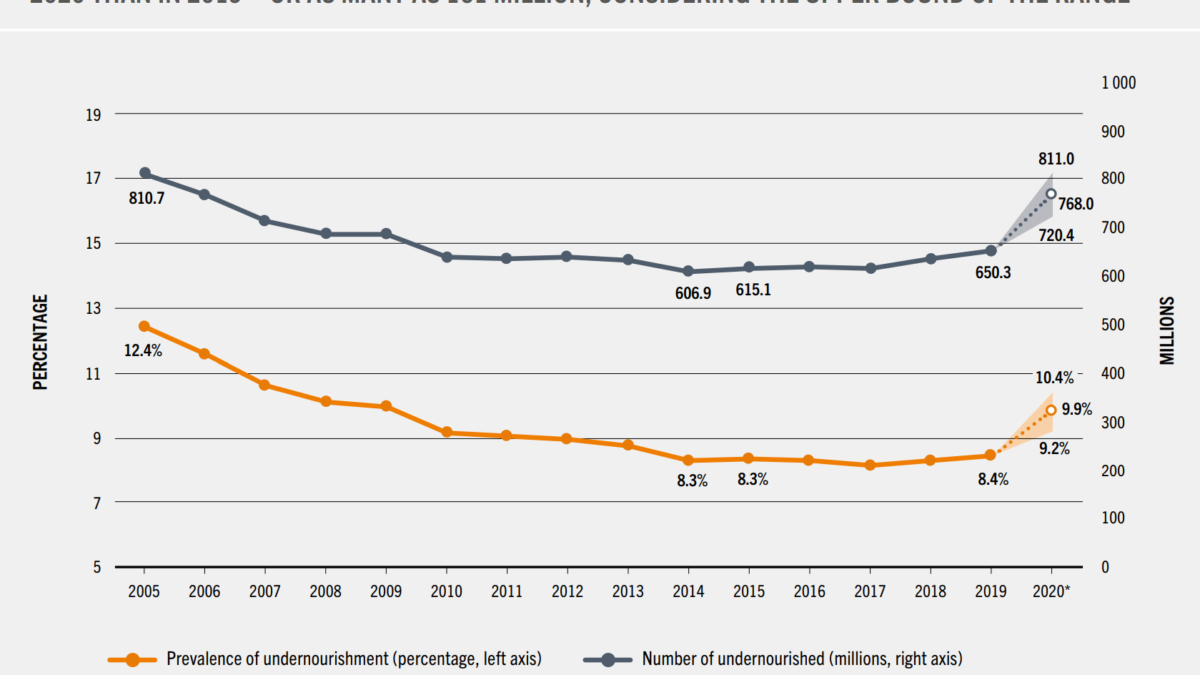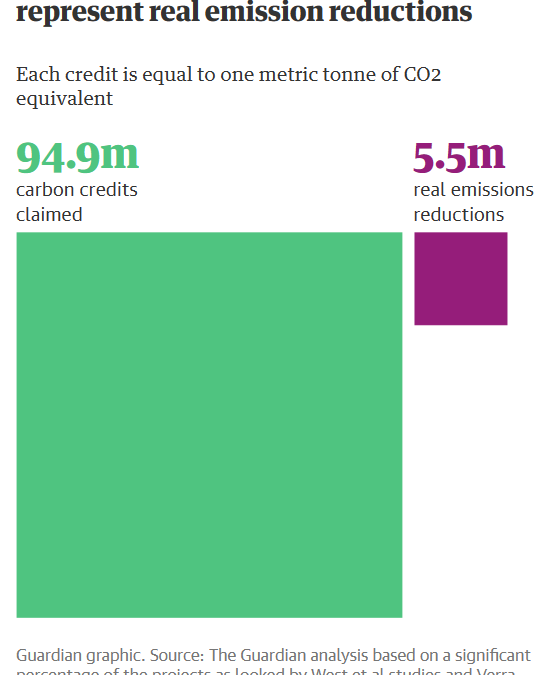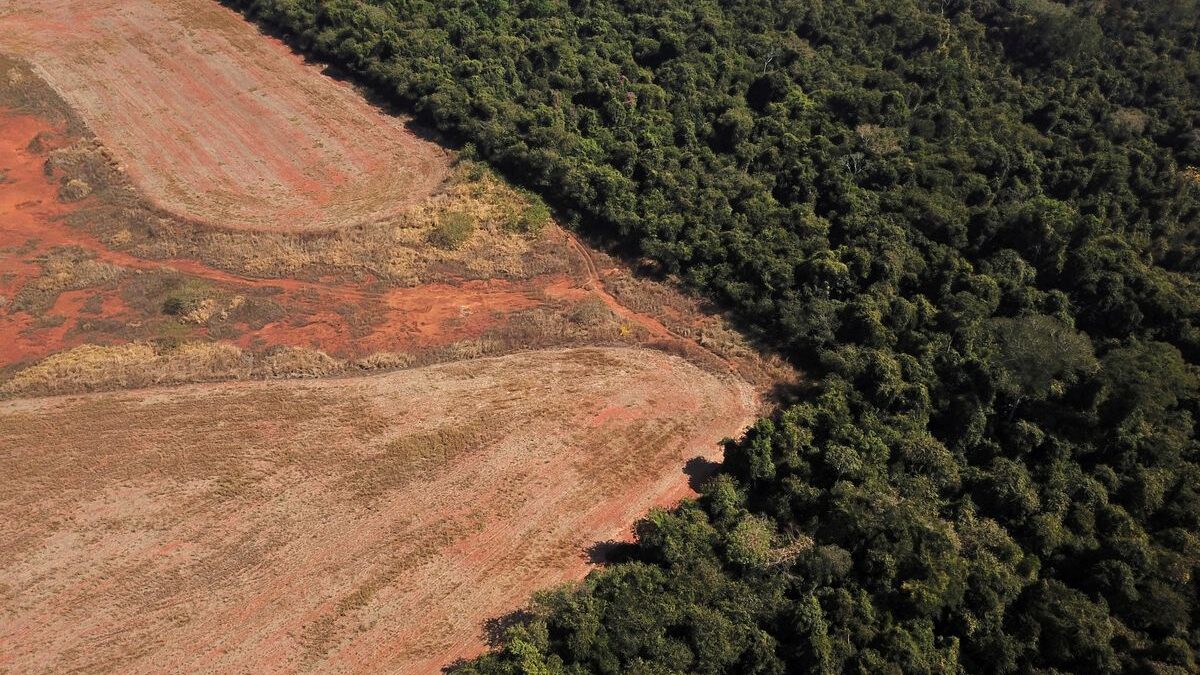Brazil detects record Amazon deforestation in January and February 2022 – Forest destruction rate in 2021 was highest in ten years
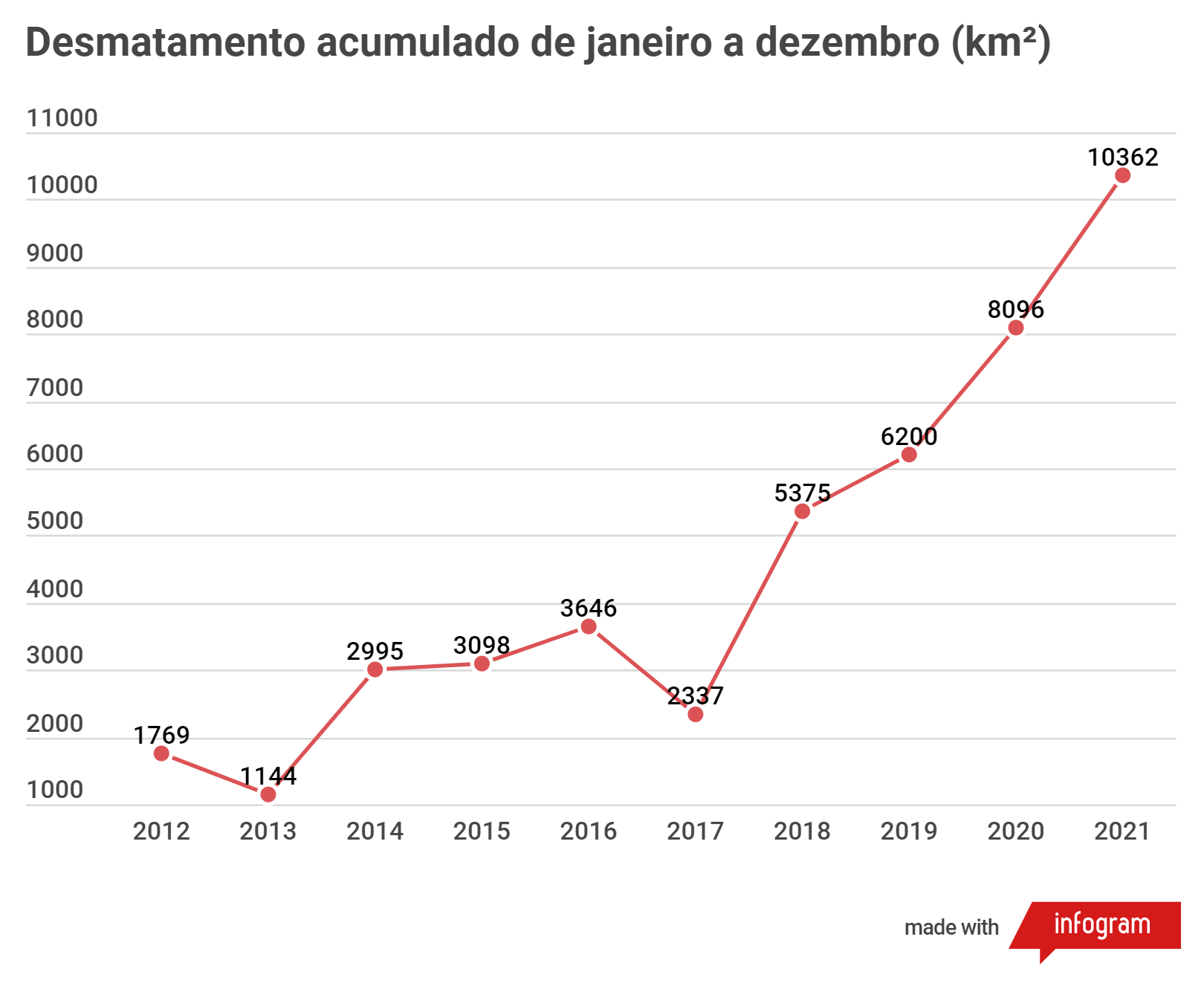
By David Biller
11 March 2022
RIO DE JANEIRO (AP) – Detected deforestation in the Brazilian Amazon reached a record high for the month of February following a similar record the prior month.
Satellite alerts of deforestation in February corresponded to 199 square kilometers (77 square miles), the highest indicator for that month in seven years of record-keeping and 62% more than in the same month in 2021, according to preliminary data from the Brazilian space agency’s Deter monitoring system that were released on Friday.
Deter data last month showed January registered 430 square kilometers of deforestation, more than quadruple the level in the same month last year.
January and February are among the months that register the least amount deforestation, and pale in comparison to levels seen in the Southern Hemisphere’s summer months. Still, some have argued the uptick could be a worrisome sign for months to come, with loggers and legislators eager to make headway before a possible handover of presidential power next January.
Deforestation has soared under President Jair Bolsonaro, who has been an outspoken champion of development in the Amazon and whose administration has defanged environmental authorities. Early polls show him trailing his rival Luiz Inácio Lula da Silva in October presidential elections.

“Imagine what will happen when months of greater deforestation incidence arrive, even more so in an electoral year,” Márcio Astrini, executive secretary of the Climate Observatory, a network of environmental groups, told The Associated Press. “We know that many who are deforesting, and even lawmakers who approve bills that favor deforestation, are betting on all or nothing, now or never, for forest destruction and reduction of forest protection through legislation.”
Earlier this week, thousands of Brazilians answered the call of artists and nonprofits, gathering outside Congress to protest bills they say threaten the Amazon rainforest by encouraging deforestation and industrial activity on protected Indigenous lands.
Deter data is considered a leading indicator for complete calculations released near yearend from the more accurate system, Prodes, which is based on clearer images.
According to Prodes data related to the 12-month reference period from Aug. 2020 to July 2021, deforestation in Brazil’s Amazon reached a 15-year high after a 22% jump from the prior year.
Brazil detects record Amazon deforestation in Jan. and Feb.

17 January 2022 (Imazon) – The Amazon rainforest experienced its worst year in a decade in 2021. From January to December, 10,362 km² of native forest were destroyed, which is equivalent to half of Sergipe. The data are from the Deforestation Alert System (SAD) of the Institute of Man and the Environment of the Amazon (Imazon), which monitors the region through satellite images. Just in relation to 2020, the year in which deforestation in the Amazon had already occupied the largest area since 2012, with 8,096 km² of forest destroyed, the devastation in 2021 was 29% greater.
Despite the month of December having shown a 49% reduction in deforestation, from 276 km² in 2020 to 140 km² in 2021, the annual negative record is extremely serious in the face of the consequences of this destruction. Among them are the change in the rainfall regime, the loss of biodiversity, the threat to the survival of traditional peoples and communities and the intensification of global warming.
Nearly half of the destruction occurred in federal public forests
Crossing the deforested areas with the Brazilian Forest Service’s (SFB) National Public Forest Registry database, the researchers observed that 4,915 km² were devastated within federal territories. This corresponds to 47% of all deforestation recorded in the Amazon last year. In these areas alone, destruction has increased by 21% compared to 2020, the worst in 10 years.
Created to preserve biodiversity and maintain sustainable ways of life for peoples and communities, federal conservation units have also seen deforestation advance across their territories. In 2021, 507 km² of native forest were devastated within these protected areas, 10% more than in the previous year. In these territories, the devastation also reached the worst level of the decade.
“To combat deforestation, it is necessary to intensify inspections, especially in the most critical areas. Apply fines and embargo illegally deforested areas” , says Imazon researcher Larissa Amorim.
Deforestation also grew in state forests and UCs
Also according to the same intersection, 813 km² were destroyed in state public forests, which is equivalent to 8% of the total deforested in the Amazon. In these areas, deforestation also reached the highest accumulated in the decade, growing 26% compared to 2020.
In state conservation units alone, 690 km² were destroyed, 24% more than in 2020. Also the worst accumulated in 10 years.
“States carry out actions to combat deforestation, but they end up being insufficient in the face of the increasing devastation that the Amazon is facing. States need to make a commitment to intensify inspection actions”, adds the researcher.
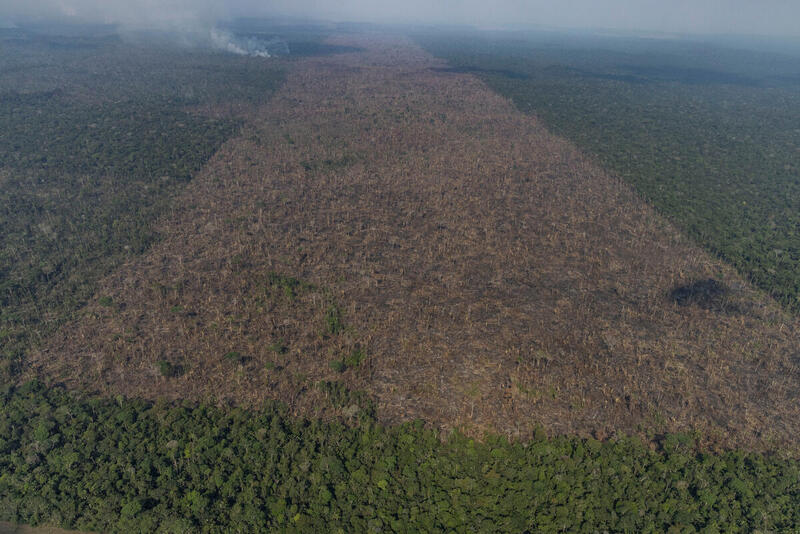
Pará leads with the largest deforested area and Amazonas in the increase in devastation
In 2021, of the nine states that make up the Legal Amazon, only Amapá did not show an increase in deforestation compared to 2020. In addition to overcoming the devastation recorded in the previous year, Acre, Amazonas, Maranhão, Mato Grosso, Pará, Rondônia, Roraima and Tocantins also had the largest areas of forest destroyed in 10 years.
Historical leader, Pará maintained the first place in the ranking of those that most deforest, with 4,037 km² devastated, 39% of the registered in the entire Amazon. In the state, there was an increase in forest clearing in both federal and state areas. In addition, more than half of the 10 indigenous lands and the 10 conservation units that deforested the most in 2021 are on Pará soil.
The second state that most deforested, Amazonas was the one that presented the greatest growth in deforestation in relation to the previous year. This is because the destruction recorded on Amazonian soil increased from 1,395 km² in 2020 to 2,071 km² in 2021, an increase of 49%. In Amazonas, there was also an increase in deforestation in both federal and state areas.
Third in the deforestation ranking in 2021, Mato Grosso devastated 1,504 km² in the period, 38% more than in the previous year. This caused the state to have the second largest increase compared to 2020. Rondônia (1,290 km²) and Acre (889 km²) occupied the fourth and fifth places in deforested area, but Acre was the third with the largest increase compared to with the previous year: 28%. [translation by Google –Des]
Desmatamento na Amazônia cresce 29% em 2021 e é o maior dos últimos 10 anos
